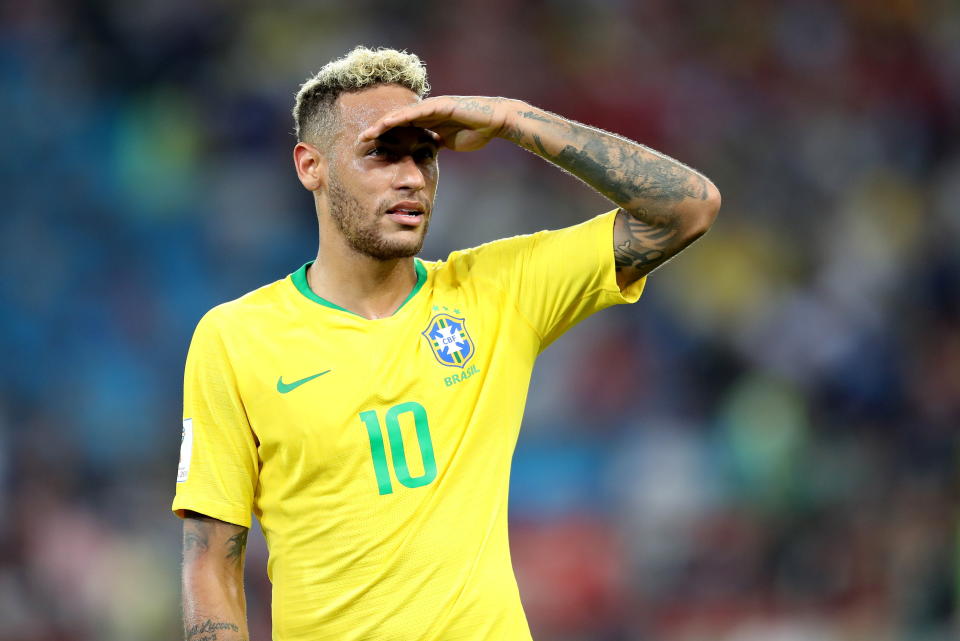World Cup ratings are bouncing back after initial drop
Only one week ago, after the first round of the group stage of the 2018 World Cup, the media narrative on viewership so far was: disaster. Ratings in the US were down 44% compared to the first round in 2014, according to Nielsen. Spanish-language broadcasts on Telemundo (owned by Comcast) saw a comparable drop. “World Cup ratings are a complete nightmare for Fox and Comcast,” wrote Bloomberg.
But then the trend changed.
Germany’s stoppage-time win over Sweden on June 23 pulled in 5.4 million viewers on Fox, making it the most-watched non-US men’s group stage game on English-language TV in 28 years. Argentina’s 2-1 win over Nigeria on June 26 got 2.6 million viewers, making it the most-watched non-US men’s third-round group stage game on English-language TV in 28 years.
Total viewership on June 27, which was Day 14 of this year’s World Cup, was up 34% over Day 14 of the 2014 World Cup, and up 22% from Day 14 in 2010. The bump was driven by big games between Mexico and Sweden, and South Korea and Germany. It was the most-watched Day 14 of a World Cup since 2006. Telemundo also saw a reversal in trend, and its best ever Monday daytime viewership on June 25, with an average 1.4 million viewers for World Cup coverage.
By the end of the full group stage on Thursday night, Fox says, viewership on Fox was up 1% overall compared to the average of the last four World Cups, including the U.S. matches from past years.

To be sure, a 1% bump may not sound like much, but it bucks the larger trend we’re seeing in all live sports viewership.
Ratings are trending downward for the NFL, and it can’t just be about politics and kneeling, because ratings are also down for Nascar, Major League Baseball, and college football. Even the Olympics are taking a hit: PyeongChang 2018 was the least-watched Winter Games ever.
In light of that trend, the large dip in viewership for the first round of the group stage should not have been shocking to anyone. Yes, it hurt Fox that the U.S. wasn’t in it. But there were additional factors: the tougher time difference for U.S. viewers this year (the games are in Russia) vs 2014 (Brazil); and many games were on FS1, a channel viewers can’t find as easily as ESPN.
The improvement after the first round suggests that the US team being absent only damaged U.S. interest during the early stages. Now that the stakes are higher and the games are closer, viewers are paying attention. Fox is also touting big growth in its streaming viewership: June 27 was the highest day for authenticated streaming viewership in the history of Fox Sports. It even appears that Major League Baseball on Fox and FS1 is seeing a World Cup bump.
MLB on FOX/FS1 in the first ten days of the World Cup:
– 5 year high on FOX last week
– Record high on FS1 last week
– FOX overnight +20% vs 2017 last night
– FS1 2nd best overnight rating of 2018 yesterday— Michael Mulvihill (@mulvihill79) June 24, 2018
New tech bells and whistles may be stoking the appeal as well. Many games are being shown in virtual reality; Adidas is using balls equipped with an NFC chip that can connect to fans’ smartphones to share data; and networks are using augmented-reality backdrops in their interviews and coverage.
Make no mistake: viewership for this World Cup is still, as of now, down from 2014. And the big drop in the first round caused big damage. World Cup sponsors surely can’t be happy, and are likely to demand refunds. “There is no way sponsors and advertisers anticipated a drop in ratings of 44%,” says Brian Cristiano, CEO of the ad agency Bold Worldwide. “Brands are either hoping the ratings shoot up as we get closer to the finals or they are writing requests for refunds on ad dollars. It’s not like broadcasters can just run a few make-goods on that much media.”
Coca-Cola, McDonald’s, and other major World Cup sponsors declined to comment on the ratings. Adidas, in a press release from before the games began, had already cautioned, “While the direct financial impact of the World Cup in 2018 will be limited for Adidas due to a highly diversified category mix, the event will be ever more so important from a brand perspective as it will help the company to drive brand desirability and expand its market leadership in football. Adidas will be present on the pitch in every single match. Every goal will be an Adidas goal.”
Fox and Comcast paid a combined $1 billion for the rights to the World Cup broadcast for this year in Russia and for 2022 in Qatar, and after pundits initially declared it a total waste after the U.S. missed this year’s World Cup, that is no longer fair. Paying up for the rights was a gamble, but if the trend continues, it may pay off.
—
Daniel Roberts is the sports business writer at Yahoo Finance. Follow him on Twitter at @readDanwrite.
Read more:
Who will buy Fox’s 22 regional sports networks?
British media group Perform spends $1 billion to stream boxing in the US
ESPN’s new OTT service is aimed at a very specific sports fan
Amazon Prime, YouTube TV are in a sports streaming race
